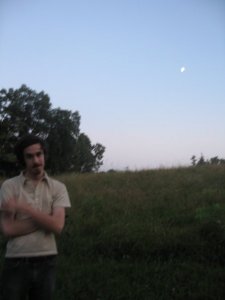
In the first part of his book
The Radicant, critic and curator Nicolas Bourriaud proposes a revival of certain modernist principles as a proactive response to to the stagnating aesthetic dead-end of postmodernism. He uses the metaphor of a
radicant, which refers to a plant species (like ivy) that digs new roots as it grows in order to collect nutrients from all of the soil it traverses, to describe the behavior of an artist working in an increasingly globalized world. Rather than being defined by his or her country of origin, the radicant artist is free to travel the world (physically or virtually through technology) and create works that can be defined as the result of their experiences and interactions with the various cultures of the world.
This is a contrast to postmodern relativism, which defines and values artworks solely in the context in which they were created and/or the cultural origins of the artist who created them. For Bourriaud, this philosophy merely increases the divides between various cultures and leaves many emigrant or exiled artists feeling trapped or alienated. Since an embracing of a globalist aesthetic bears certain similarities to modernist universalism (without the toxic Eurocentrism), he termed this new era
altermodernity.
My primary criticism of Bourriaud's altermodernity is that it makes the individual artist's role merely curatorial, as though her or his sole task is to pick up the detritus of history and cleverly reassemble it in an attempt to rebuild the ruptured link between sign and signified. He calls this new artist a
semionaut ("sign explorer") and points to the fact that nonfiction documentaries are most prevalently shown in art festivals (rather than on television or in movie theaters) as evidence that this, rather than a further move towards total abstraction (which Bourriaud sees as a fundamental characteristic of advanced capitalism), is the altermodern artist's task.
"What I term altermodern is precisely the emergence, at the beginning of the twenty-first century, of [...] a new cultural precipitate, the formation of a mobile population of artists and thinkers choosing to go in the same direction. A start-up, an exodus."
- Nicolas Bourriaud, The Radicant, p. 43
Postmodern deconstructionism successfully demonstrated the fallacy of the modernist notion of a universal linear history, showing instead that history is a vast spiderweb of interconnected events and ideas. As a result, any notions of novelty or originality (measures of aesthetic value in the modernist era) are either moot or chauvanistic. The altermodern semionaut, then, can traverse this spiderweb to mine any material she pleases in order to rebuild the bridges that collapsed with modernism.
OK, fine. I figured out that individuality and originality were kind of bogus back in high school (though it didn't keep me from trying), so that doesn't upset me too much. My real issue with this total curatorialism is that it inherently puts a wall between between the curator/artist/semionaut and the material from which they draw inspiration, which could come dangerously close to a sort of colonialistic objectification of "exotic" cultures if done carelessly. This line in the sand seems to become more apparent when one considers Bourriaud's mission to amass a "population of artists and thinkers choosing to go in the same direction" -- to move past postmodernism and reestablish some sort of semiotic bond between sign and signified.
Quite simply, the vast majority of people in the world don't understand nor care about moving beyond postmodernism, even though the same socioeconomic issues that have brought about the postmodern era are responsible for the capitalist system that touches almost every corner of the globe today. I became uneasy every time Bourriaud used the term "we", because it made me think of the audience who was likely to be reading his book -- first world citizens who are incredibly fortunate enough to attend a liberal arts college, like me -- and how, even if members of this audience take root in other non-first-world cultures and use their experiences in these cultures to help "go in the same direction", they further the divides between peoples with the only goal of 'harvesting' culture to solve Western philosophical dilemmas.
I respect Bourriaud's boldness in reexamining modernist principles (which have been largely taboo for several decades now) in an attempt to back out of the hole postmodernism has dug us. However, given his position as curator of a preeminent art gallery, his advocacy of curatorialism in altermodern art seems very self-serving. Moreover, his mission to reestablish the representational and semiotic in art leaves little room for those of us who work with music, which is largely an abstract art form (and has been since even before the rise of capitalism). I look forward to reading parts 2 and 3 to see how my opinions change.
 Last night, Drift (a Field) was premiered as part of the New Media Projects Showcase at Lawrence University. I’ve been posting regular status updates on this project on this blog, so I won’t recap the entire gestation process here, only offer some brief notes about the finished work.
Last night, Drift (a Field) was premiered as part of the New Media Projects Showcase at Lawrence University. I’ve been posting regular status updates on this project on this blog, so I won’t recap the entire gestation process here, only offer some brief notes about the finished work. 


















